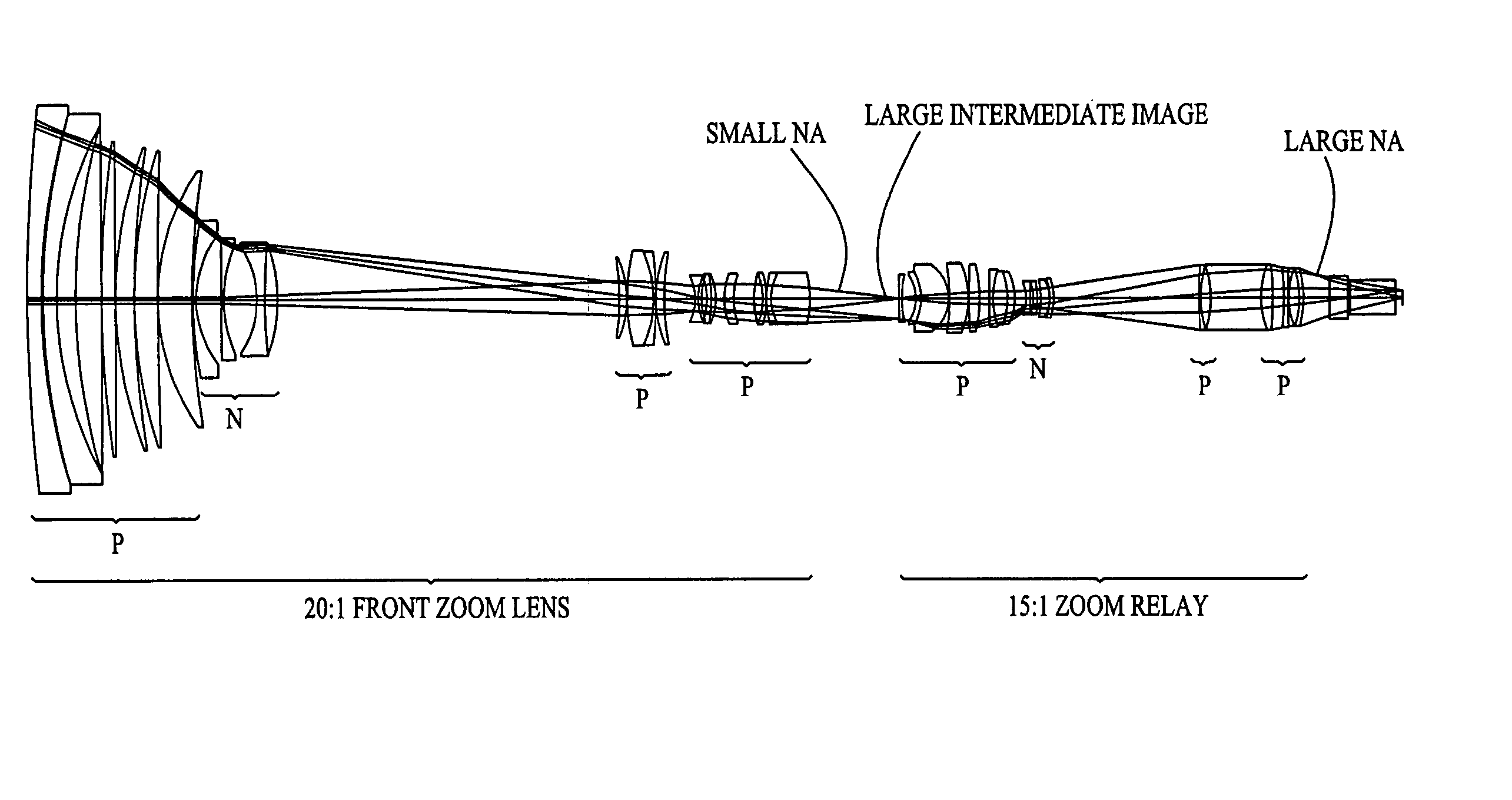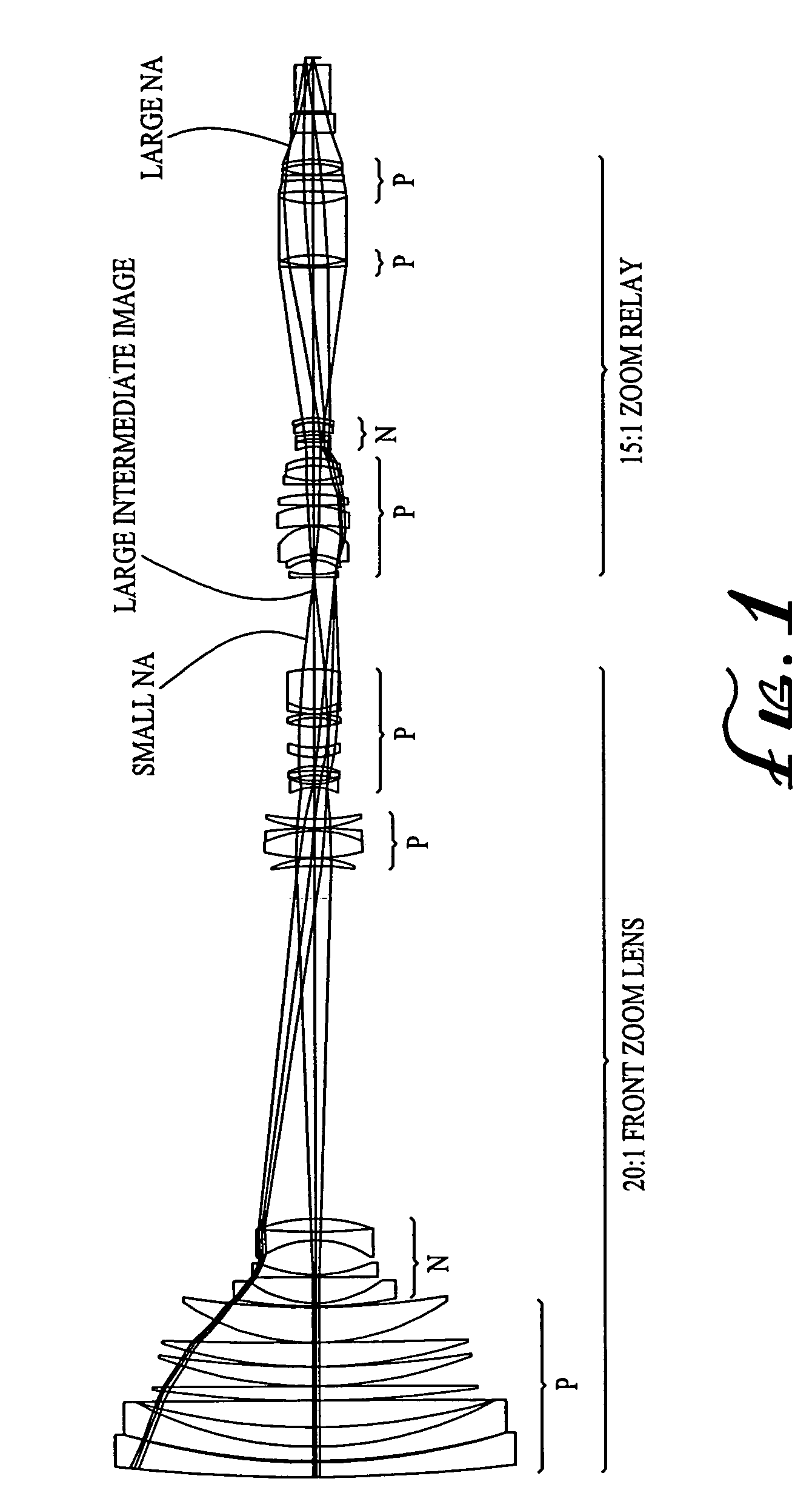Zoom lens system
a zoom lens and lens technology, applied in the field of optical lens systems, can solve the problems of reducing optical power, impracticality large and difficult to correct, large front group, etc., and achieve the effects of strong impact, minimal cost of aspheric surface use, and generous tolerances
- Summary
- Abstract
- Description
- Claims
- Application Information
AI Technical Summary
Benefits of technology
Problems solved by technology
Method used
Image
Examples
Embodiment Construction
. As described above in the section entitled "Description of Some Zooming Principles and Systems of the Invention", each of the herein disclosed embodiments of the present invention includes a front zoom lens portion and a rear zoom lens portion thereby forming a compound zoom lens system. An intermediate image is formed after the front zoom lens portion whereby the rear zoom lens portion functions as a zoom relay to magnify the intermediate image so as to produce the magnified final image for capturing by film or any other kind of light detector or capture device, such as a charge coupled device (CCD), in a camera. For purposes of this application, the term "camera" is used generically to describe any kind of light detecting or capturing device that may be placed after the lens system of the present invention, including a still, video or movie capture device, whether containing film, videotape, optical disk, CMOS, CCD or another storage medium, or an eyepiece or the human eye. Any ...
PUM
 Login to View More
Login to View More Abstract
Description
Claims
Application Information
 Login to View More
Login to View More - R&D
- Intellectual Property
- Life Sciences
- Materials
- Tech Scout
- Unparalleled Data Quality
- Higher Quality Content
- 60% Fewer Hallucinations
Browse by: Latest US Patents, China's latest patents, Technical Efficacy Thesaurus, Application Domain, Technology Topic, Popular Technical Reports.
© 2025 PatSnap. All rights reserved.Legal|Privacy policy|Modern Slavery Act Transparency Statement|Sitemap|About US| Contact US: help@patsnap.com



